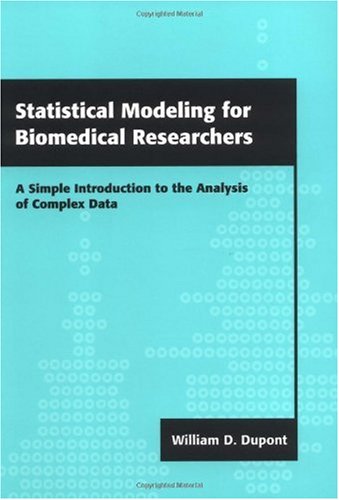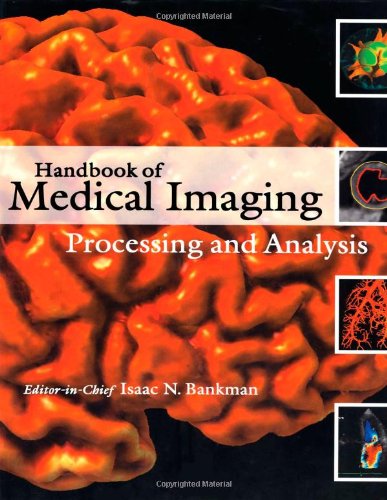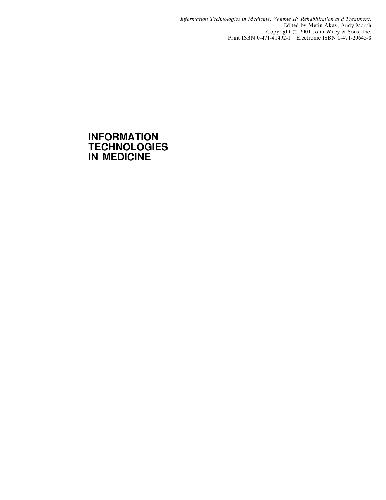Gari D. Clifford, Francisco Azuaje, Patrick McSharry1580539661, 9781580539661, 9781580539678
Table of contents :
1580539661……Page 2
1.1 Cellular Processes That Underlie the ECG……Page 17
1.2 The Physical Basis of Electrocardiography……Page 20
1.3 Introduction to Clinical Electrocardiography: Abnormal Patterns……Page 28
References……Page 40
Selected Bibliography……Page 41
2.1 Introduction……Page 43
2.2 Initial Design Considerations……Page 44
2.3 Choice of Data Libraries……Page 51
2.4 Database Analysis–An Example Using WFDB……Page 53
2.5 ECG Acquisition Hardware……Page 57
References……Page 66
3.2 Spectral and Cross-Spectral Analysis of the ECG……Page 71
3.3 Standard Clinical ECG Features……Page 76
3.4 Nonstationarities in the ECG……Page 80
3.5 Arrhythmia Detection……Page 83
3.6 Noise and Artifact in the ECG……Page 85
3.7 Heart Rate Variability……Page 87
3.8 Dealing with Nonstationarities……Page 99
3.9 Summary……Page 108
References……Page 109
4.1 Introduction……Page 117
4.2 RR Interval Models……Page 118
4.3 ECG Models……Page 131
4.4 Conclusion……Page 142
References……Page 143
5.1 Introduction……Page 151
5.2 Wiener Filtering……Page 152
5.3 Wavelet Filtering……Page 156
5.4 Data-Determined Basis Functions……Page 164
References……Page 183
6.1 Introduction……Page 187
6.2 Nonlinear Signal Processing……Page 188
6.3 Evaluation Metrics……Page 194
6.4 Empirical Nonlinear Filtering……Page 195
6.5 Model-Based Filtering……Page 202
6.6 Conclusion……Page 209
References……Page 210
7.3 Pathophysiology of T-Wave Alternans……Page 213
7.4 Measurable Indices of ECG T-Wave Alternans……Page 215
7.5 Measurement Techniques……Page 217
7.6 Tailoring Analysis of TWA to Its Pathophysiology……Page 223
References……Page 227
8.1 Introduction……Page 231
8.2 EDR Algorithms Based on Beat Morphology……Page 234
8.3 EDR Algorithms Based on HR Information……Page 244
8.4 EDR Algorithms Based on Both Beat Morphology and HR……Page 245
8.5 Estimation of the Respiratory Frequency……Page 246
8.6 Evaluation……Page 252
8.7 Conclusions……Page 256
References……Page 257
Appendix 8A Vectorcardiogram Synthesis from the 12-Lead ECG……Page 259
9.1 Overview of Feature Extraction Phases……Page 261
9.2 Preprocessing……Page 264
9.3 Derivation of Diagnostic and Morphologic Feature Vectors……Page 267
9.4 Shape Representation in Terms of Feature-Vector Time Series……Page 276
References……Page 279
Appendix 9A Description of the Karhunen-Lo`eve Transform……Page 280
10.1 ST Segment Analysis: Perspectives and Goals……Page 285
10.2 Overview of ST Segment Analysis Approaches……Page 286
10.3 Detection of Transient ST Change Episodes……Page 288
10.4 Performance Evaluation of ST Analyzers……Page 294
References……Page 303
11.1 Introduction……Page 307
11.2 The Electrocardiogram……Page 308
11.3 Automated ECG Interval Analysis……Page 309
11.4 The Probabilistic Modeling Approach……Page 310
11.6 Introduction to Hidden Markov Modeling……Page 312
11.7 Hidden Markov Models for ECG Segmentation……Page 320
11.8 Wavelet Encoding of the ECG……Page 327
11.9 Duration Modeling for Robust Segmentations……Page 328
References……Page 332
12.1 Introduction……Page 335
12.2 Generation of Features……Page 336
12.3 Supervised Neural Classifiers……Page 340
12.4 Integration of Multiple Classifiers……Page 346
12.5 Results of Numerical Experiments……Page 347
References……Page 352
13.2 Basic Concepts and Methodologies……Page 355
13.3 Unsupervised Learning Techniques and Their Applications in ECG Classification……Page 357
13.4 GSOM-Based Approaches to ECG Cluster Discovery and Visualization……Page 368
13.5 Final Remarks……Page 375
References……Page 378
About the Authors……Page 383
Index……Page 387







Reviews
There are no reviews yet.